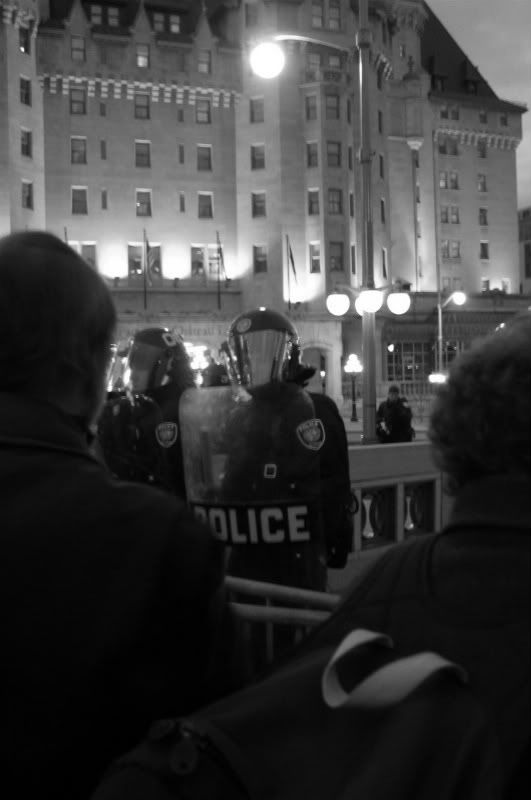In the wake of the Missing Women Commission of Inquiry, which was tasked with evaluating and formulating recommendations surrounding the police protection of vulnerable women in the Vancouver Census Metropolitan Area (formerly GVRD), a dialogue pertaining to the development of a regional police force resurfaced. The discussion surrounding the creation of a regional police force for the Greater Vancouver region and Capital region has been ongoing for almost three decades as debate continues over the extent to which police collaboration would improve with the amalgamation of existing municipal forces. Eleven municipal police agencies presently operate in British Columbia in addition to the numerous RCMP detachments contracted to provide policing services in the province. While it is recognised that informal cooperation between these agencies currently exists, it was Commissioner Oppal’s recommendation that a Greater Vancouver regional force be implemented to enhance coordination of investigative bodies.
Resistance over the formation of a regional force appears in part to stem from concern over how such an agency would be kept accountable. In establishing an accountability framework to oversee a regional police body in British Columbia it may be beneficial to turn to the Special Investigations Unit (SIU) in Ontario which has been in operation for over twenty years and is revered by many as an archetype in police oversight. However, the SIU continues to have a number of downfalls which can also be beneficial to take into consideration when constructing a new oversight body.
The Police Act (1996) in British Columbia would require amendment to reflect the presence of a new oversight body responsible for a regional force, or a reworking of the powers of existing provincial oversight agencies – such as the Independent Investigations Office (IIO) and the Office of the Police Complaint Commissioner (OPCC). Legislation is necessary to ensure the cooperation of police agencies with external review bodies during the course of investigations into allegations of police misconduct. Similar provisions are apparent in the Ontario Police Services Act (1990); however, there appears to be a lack of sanctioning when officers being investigated do not fully cooperate – an aspect of the SIU’s accountability mechanism which is wanting. In light of this difficulty faced by the SIU, prescribed legal sanctioning ought to be developed and included in BC’s legislation.
Ideally these two agencies would be integrated into a single independent civilian oversight board tasked with handling complains against police made directly from the public as well as investigating all incidents involving police which result in serious injury, death, or contain allegations of sexual assault. (For a talk outlining the present and future goals of the IIO see this video) It is important to have civilian oversight which is completely divorced from policing agencies as allowing police to investigate themselves gives the public the impression that internal reviews are not impartial or fair. Not only do the investigations into alleged misconduct need to be free from partisan bias, they must also be transparent, appearing to the public to be free of bias. The public must be able to discern that the investigative process is structured to protect against review findings which are favourable to the police department involved. If the public questions the arm-length of investigations the validity of reviews will be undermined as will be the legitimacy of the police in general.
With the consolidation of the province’s existing oversight agencies into a single review board a widening of powers should also occur. Presently neither the OPCC nor the IIO possess any definitive power in sanctioning those found guilty of wrongdoing. Recommendations may be made for organisational disciplinary action, policy reform, and even to Crown counsel in terms of criminal charges, yet there is no requirement that any of these recommendations be adhered to. In an attempt to allow for means of true and effective accountability the organisation should be a criminal law enforcement agency which has the ability to lay criminal charges against officers who are found to have engaged in misconduct.
While oversight bodies are an important aspect in an effective accountability mechanism, it is imperative to recognise that they operate largely on a reactive basis. Therefore, it is integral when considering the efficacy of a review body to consider the pro-active measures of accountability in place. The development of an early intervention system, similar to that which is seen under the Australian Federal Police Act, may be a beneficial practice. Such strategy highlights trends and patterns of individuals and work areas which are vulnerable to conduct and corruption issues. The policing organisation as a whole, as well as each work area, is responsible for assessing risks of deviance related to policing in general as well as those risks which are specific to certain policing tasks. This allows for multi-level responsibility and accountability as well as the development of risk-management strategies which are tailored to each area’s specific set of risks. To read more on these procedural controls and risk management practices in Australia see this book.

